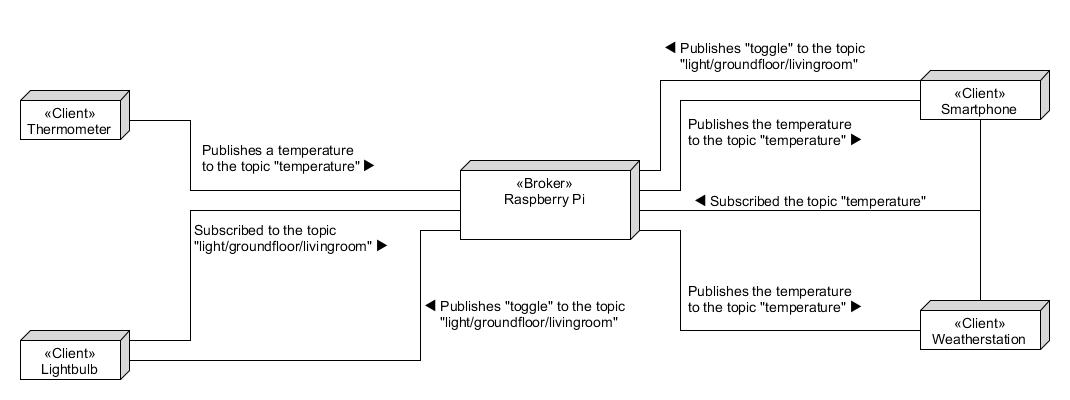What is MQTT?
MQTT is a messaging-protocol, that allows us to build up a connection between clients and a so-called “broker”, fast and efficiently.
It is easy to use and scalable in very big dimensions.
A MQTT-client does not need many resources, it even could be a micro-controller inside of a lightbulb (e.g. the “Phillips Hue”).
How does it work?

MQTT uses a “publisher/subscriber”-system. One or more clients publish their data to a topic, which other clients are able to subscribe to.
The broker has a connection to all clients and decides which subscriber receives which data based on the topics.
Topics
A topic is a UTF-8 string with different “levels” separated by forward slashes and looks like this:
smarthome/kitchen/lamps/top/turquoise
smarthome/kitchen/lamps/#
A # addresses all sublevel after it, in our case all lamps in the kitchen.
Due to security reasons most broker do not allow subscribing to a single #.
Payload
A publisher sends its data wrapped in a Payload.
In our case (we are using a “Phillips Hue”) it is a JSON-file and can look like this:
{
"state": "ON",
"color": {
"r": 0,
"g": 255,
"b": 255
}
}
The above code will turn on the lamp with a bright turquoise color
QOS
QOS stands for quality of service and describes how often a packet should be delivered.
There are three levels of QOS:
- One or Less delivery (0)
- At least one delivery (1)
- Exactly one delivery (2)
Retain
If the retain-flag of a message is true, the broker will store this message and send it to every new subscriber.
The broker stores only one message per topic.
Sources
What’s next?
At our Node-Red-page you will learn, how to use the MQTT-protocol to control lights and other features.